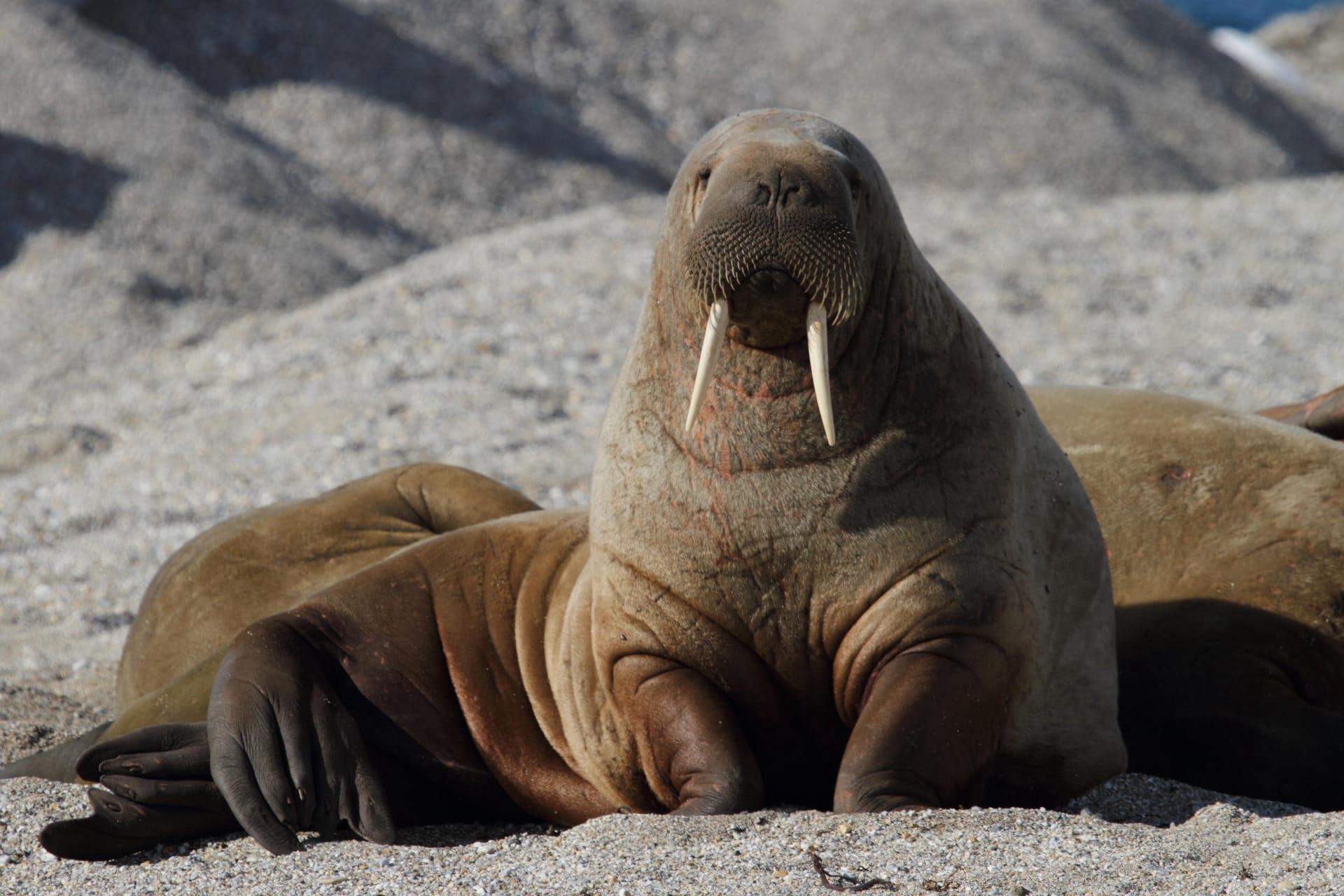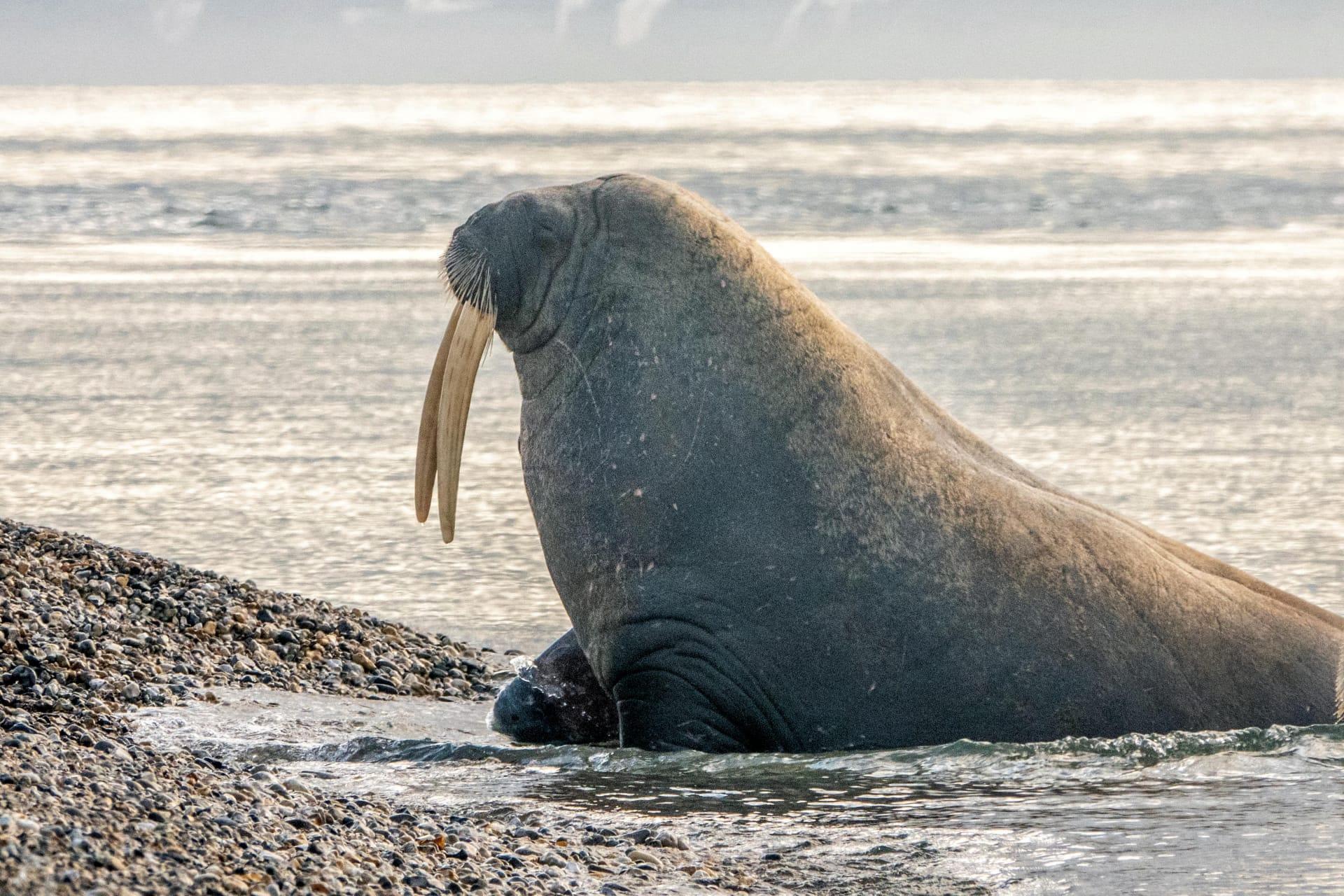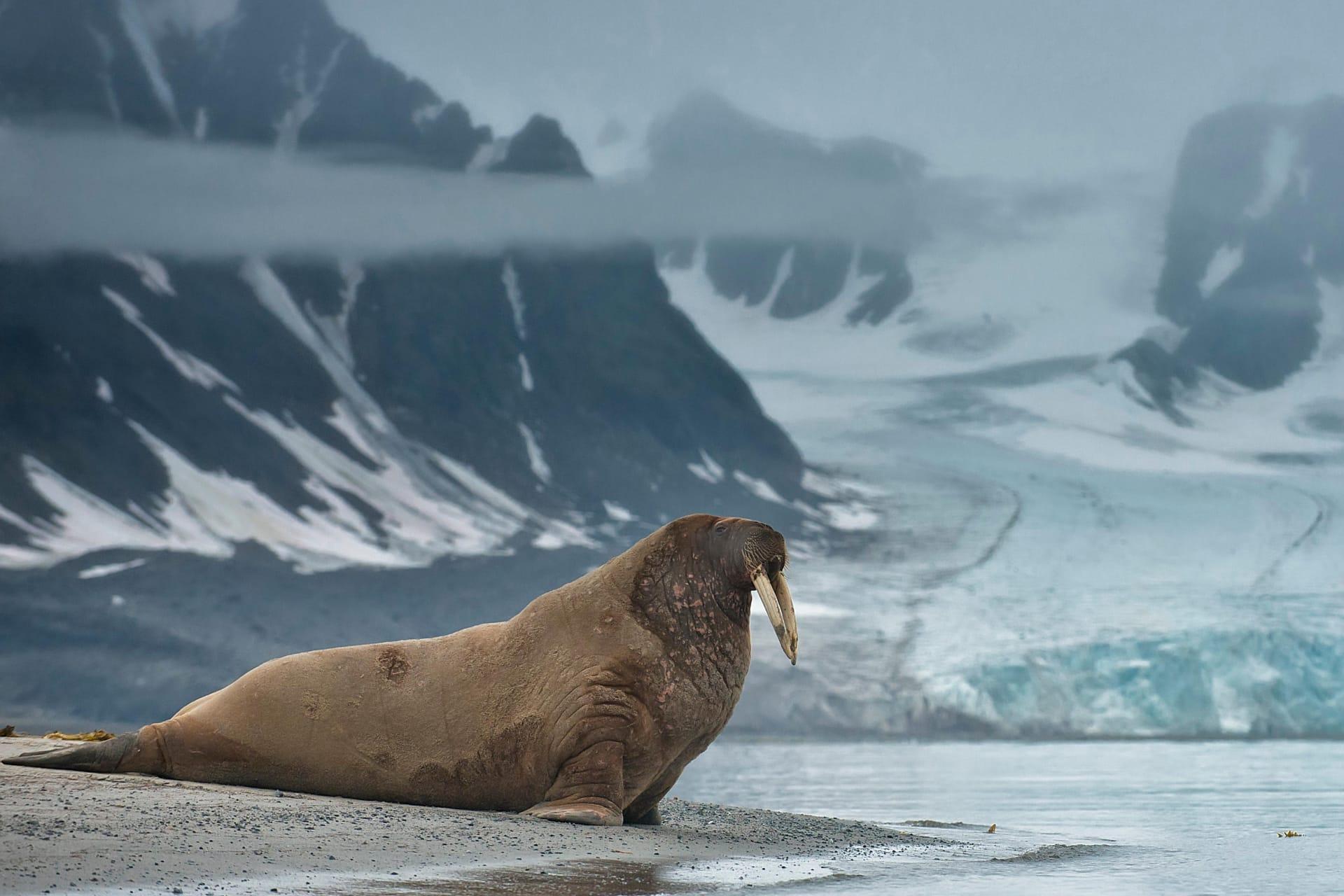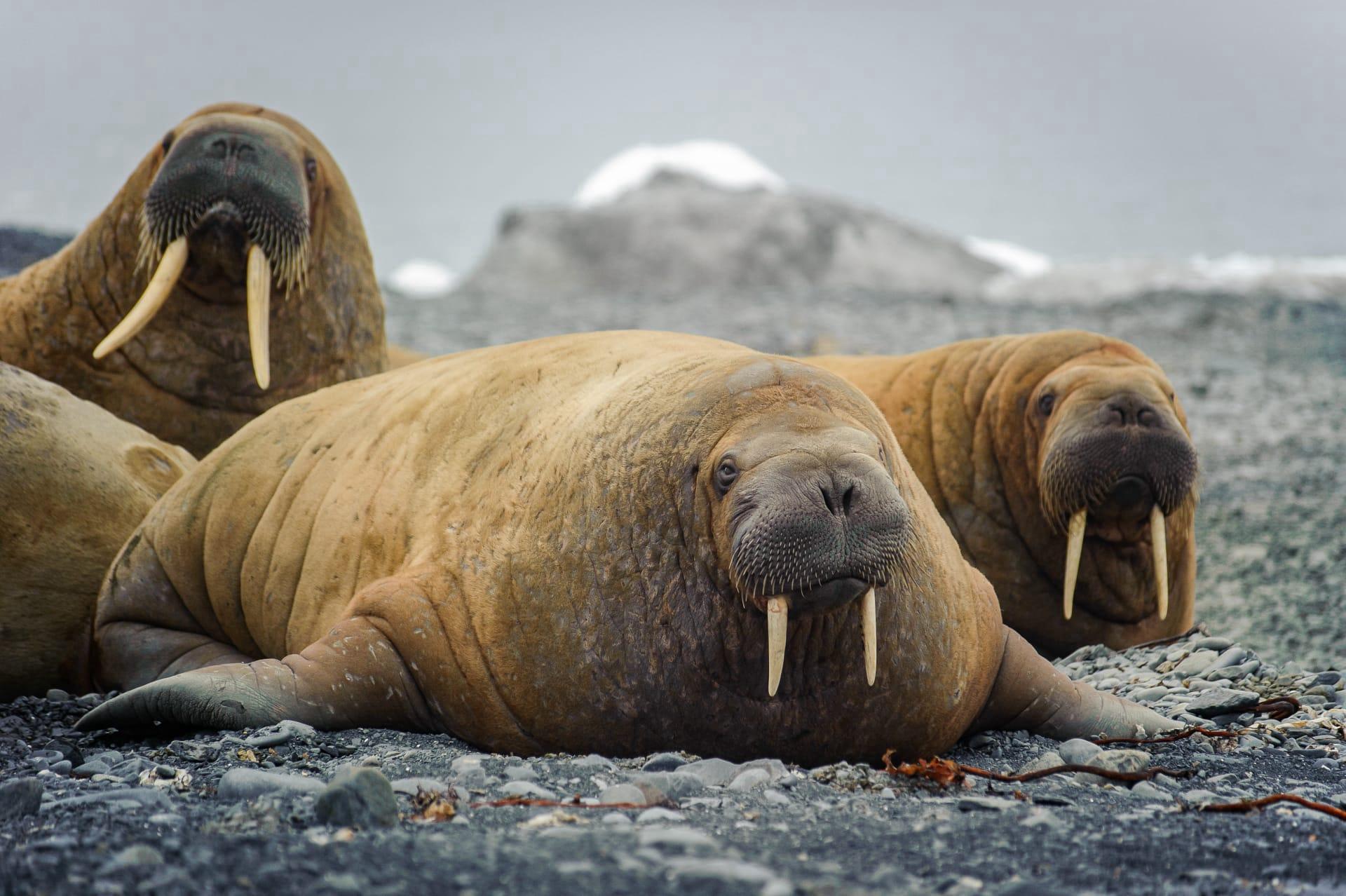Walrus
- Home /
- Mini Encyclopedia /
- Animal /
- Walrus
1
The walrus, a large marine mammal, is part of the family Odobenidae and the genus Odobenus. This species is uniquely identified as Odobenus rosmarus. They're known for their distinctive tusks, whiskers, and bulk. Adult males can reach a length of about 12 feet and weigh up to 1,500 kilograms, while females are slightly smaller. These creatures have a lifespan of up to 40 years in the wild.
Walruses are primarily found in the Arctic Ocean and the subarctic seas of the Northern Hemisphere. Their habitat is characterized by icy waters and they are particularly abundant in the Bering and Chukchi Seas. They are known to migrate following the movement of sea ice, as it plays a crucial role in their lifestyle for resting and giving birth. The walrus population is divided into two subspecies: the Atlantic walrus (Odobenus rosmarus rosmarus), found in the Atlantic Ocean, and the Pacific walrus (Odobenus rosmarus divergens), found in the Pacific Ocean.

2
Question: Do walruses use their tusks to hunt prey?
Answer: Contrary to popular belief, walruses do not use their long tusks to catch prey. Instead, these impressive canines, which can grow up to three feet in length, serve multiple purposes, such as aiding in climbing out of water onto ice, social dominance, and defense. Their diet mainly consists of benthic invertebrates like clams, mollusks, and small fish. Walruses locate their food through their highly sensitive whiskers, detecting prey in the murky waters and then using a powerful suction technique to extract their meal from the shell.

3
Walruses have adapted remarkable survival strategies to thrive in the harsh Arctic environment. They have a thick layer of blubber, up to six inches, which not only provides insulation in the freezing temperatures but also serves as a crucial energy reserve during times when food is scarce. This blubber layer contributes significantly to their buoyancy in water.
Their social structure also plays a key role in their survival. Walruses are highly social animals, often found in large herds. This social behavior provides protection from predators like polar bears and killer whales. During breeding season, males engage in vocal and physical displays to attract females, showcasing a fascinating aspect of their social interactions.

4
In the Arctic ecosystem, walruses play a significant role. They are considered a keystone species, meaning their presence and behavior significantly influence the marine environment. For instance, their foraging habits impact the distribution and abundance of the benthic prey species.
Walruses also have a unique role in the cultural and economic aspects of indigenous Arctic communities. They have been a vital source of food, tools, and materials for these communities for thousands of years. Their tusks are often used for carving and crafting, and their skin and blubber for clothing and shelter, showcasing the integral relationship between walruses and human cultures in the Arctic.

5
Film: A notable documentary on walruses is "Arctic Tale" (USA, 2007). This film narrates the life of a walrus and a polar bear in the Arctic. It showcases their struggle for survival in the changing Arctic environment due to climate change, providing insights into the behavior and challenges faced by these species.
Book: "The Walrus and the Caribou" (USA, 2020) by Dan O'Neill. This book offers an in-depth look at the historical relationship between humans and walruses, emphasizing the impact of hunting and climate change on walrus populations.
Book: "Walruses of the Arctic" (Canada, 2019) by Sarah Levete. This educational book provides detailed information about the life of walruses, their habitat, behavior, and the threats they face. It's designed to foster awareness and appreciation for these remarkable Arctic inhabitants among younger readers.